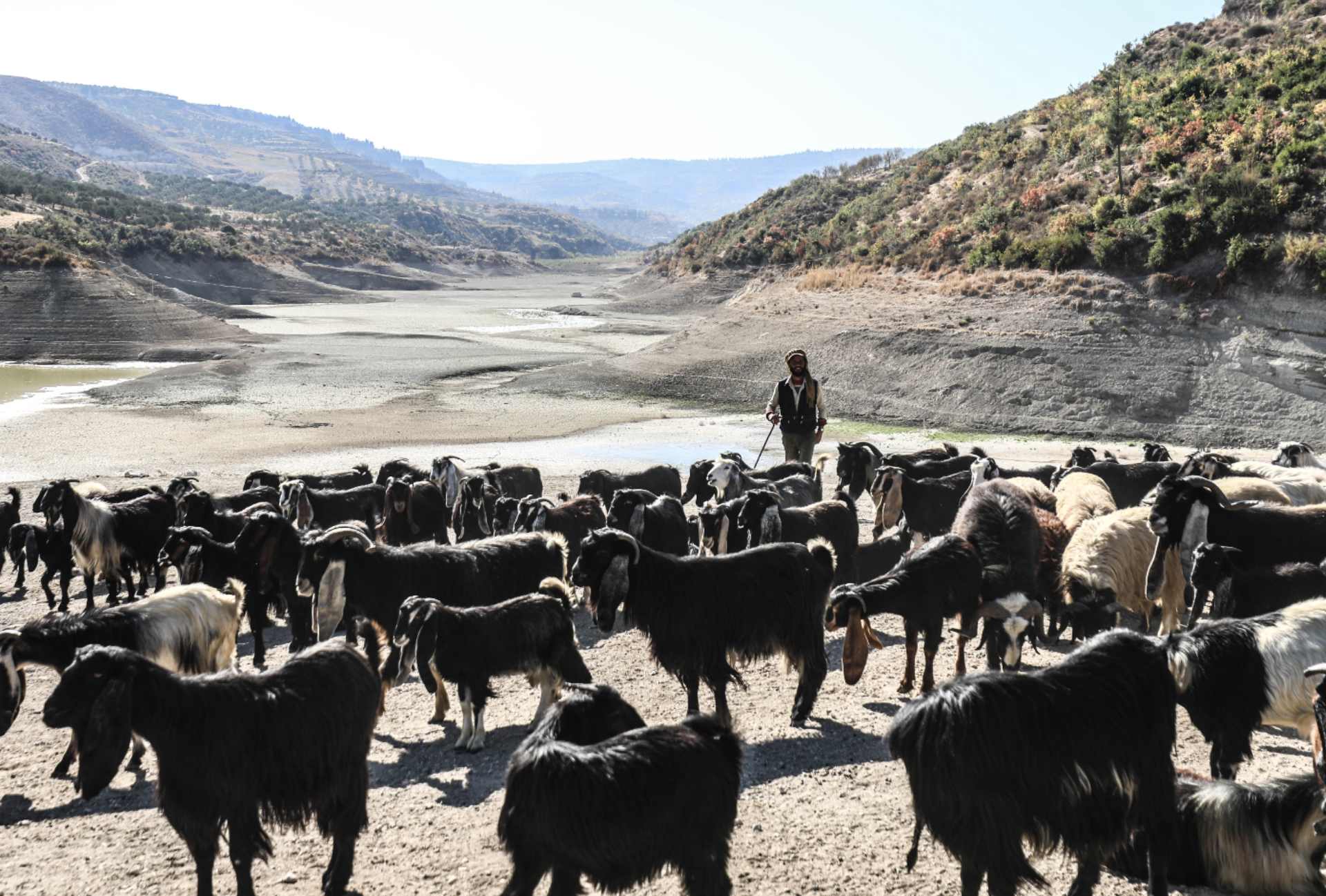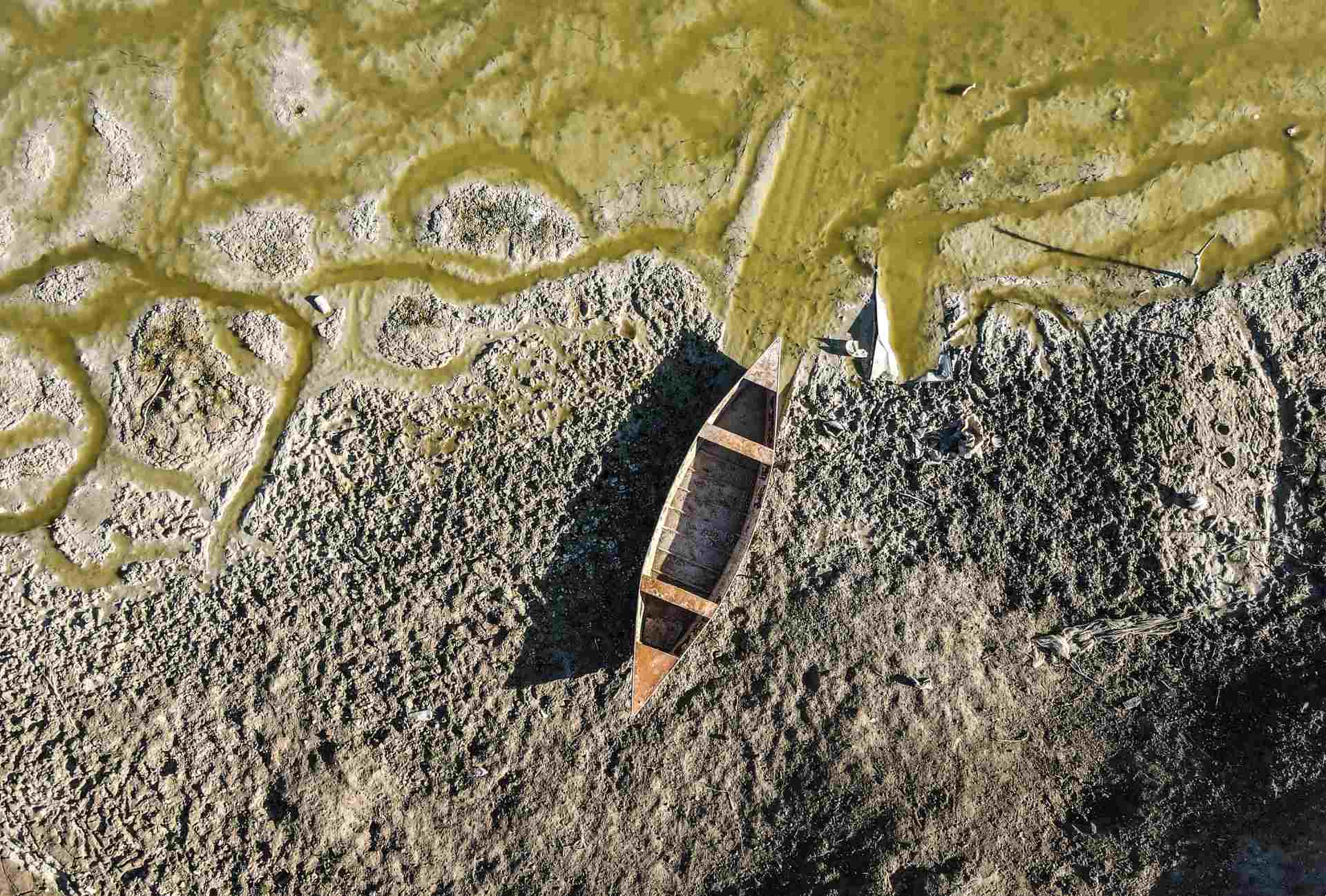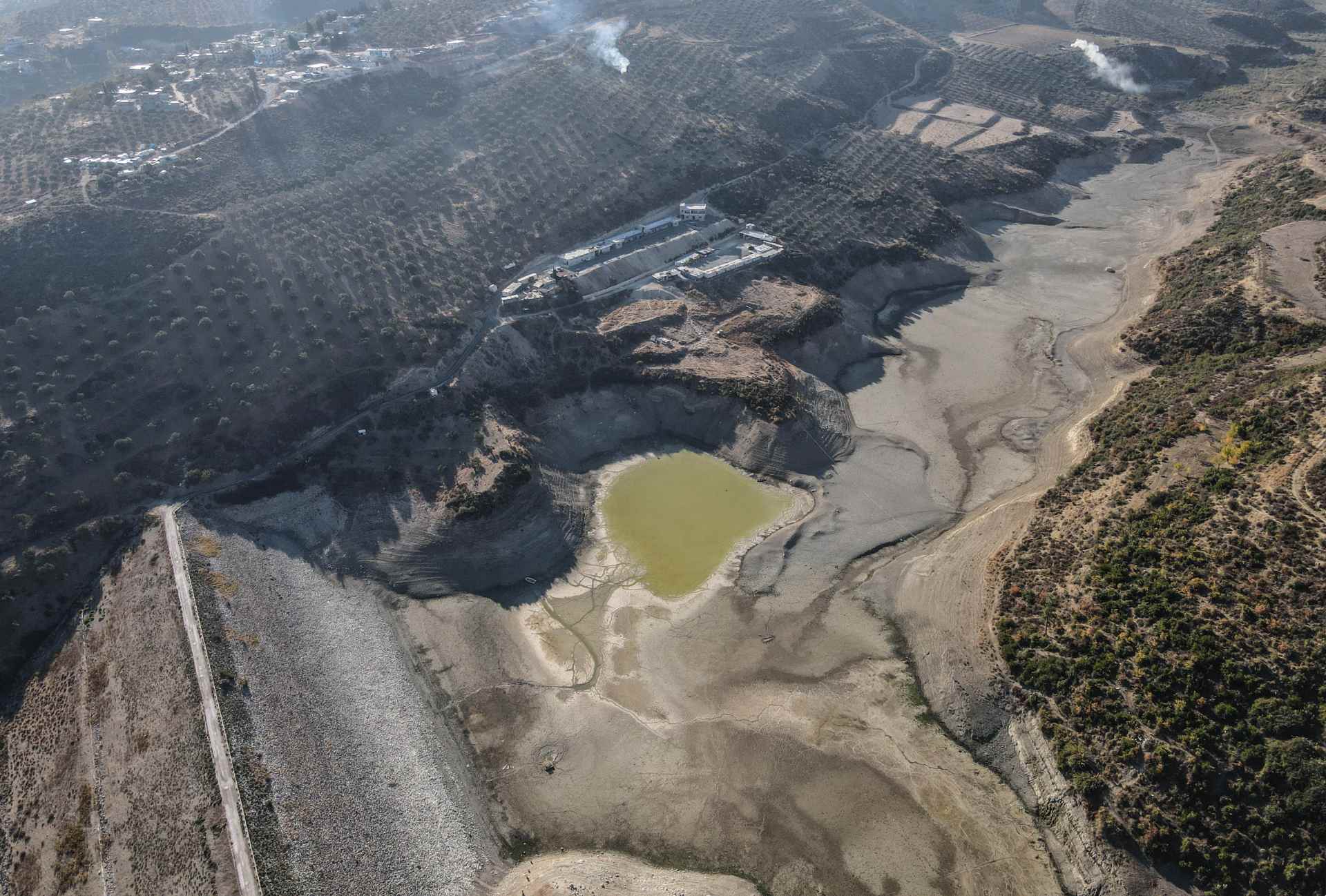The lake that vanished: Climate change and conflict combine in Syria's Idlib
As the sun rises on a new morning, Lotfi Tamer inspects his parched agricultural land in the western countryside of Idlib province.
Rain has been late this year in this rugged corner of northwest Syria, affecting withering citrus trees and seasonal vegetable crops with yellowing leaves.
Tamer owns about 20 dunums (two hectares) of land in the village of Duwaisat, close to the Turkish border. He relies on the Duwaisat dam to irrigate the land, but about three months ago the reservoir, which collects rainwater, dried up for the first time since its construction in 1994.
'When the water dried up, we found mud covering a depth of about 10 to 15 metres'
- Lotfi Tamer, farmer
“Everyone thought that the lake was deep and that there was a large reservoir of water,” Tamer told MEE. “But when the water dried up, we found mud covering a depth of about 10 to 15 metres.”
Tamer said tree cutting on the surrounding hillsides had resulted in substantial soil deposits being washed into the lake by rainwater over years.
He told Middle East Eye that his losses are significant this season due to drought conditions and a lack of alternative irrigation methods. Tamer estimates that local farmers have each lost between $500 and $2,000 in income in recent months.
Fishermen, shepherds, and nearby camps for people displaced by Syria’s war have also been affected by the disappearance of the local area’s main source of water.
The situation has also attracted the attention of officials at the United Nations agency responsible for responding to humanitarian crises.
According to the UN Office for the Coordination of Humanitarian Affairs (OCHA), the reservoir should hold 3.6 million cubic metres of water - enough to irrigate 250-280 hectares of cultivated lands and supply 900-1,200 households in farming and fishing communities.
“War has displaced millions of people in Syria and now climate change is making the situation even worse,” Mark Cutts, the UN deputy regional humanitarian coordinator for the Syria crisis, told MEE.
“As a result of drought, the Duwaisat dam in the northwest, used mainly for irrigation, has dried out for the first time since it was built nearly three decades ago.”
Picnic spot
Duwaisat’s lake was once a popular spot for families and friends to gather for weekend picnics. But since the beginning of Syria’s civil war nearly a decade ago, people have come to the remote surrounding area to escape from the conflict. There are now about 10 nearby camps for the displaced, according to local residents.
Idlib, which remains outside of Syrian government control and is mostly controlled by Hay’at Tahrir al-Sham militants, is home to about 3.1m people. Half of them are displaced and living below the poverty line, and almost three-quarters lack access to adequate water, according to OCHA data.
The province's population relies mainly on agriculture and UN aid, but Syria's last rainy season between late autumn and early spring was low and irregular, severely affecting agricultural production and leading to drought-like conditions.
Syria is among the countries considered by UN agencies to be most at risk from extreme climatic events, and the third most vulnerable in the world to drought.
In a statement issued last month to mark World Food Day, UN officials said that drought-like conditions in the north and north-east of the country meant that around 40 percent of irrigated agricultural areas can no longer count on water availability – and that millions more people are at risk of going hungry.
“In the worst affected areas, farmers are simply abandoning their land and selling their livestock. This not only erases their income and livelihood prospects, it further drives up local food costs and shortages, impacting entire communities,” the statement said.
The World Health Organisation estimates that 12.4 million Syrians already suffer from food insecurity.
Cracked concrete
Local residents in Duwaisat say that it is not just climate change but neglect of basic maintenance of the dam due to the conflict that has led to the disappearance of the lake.
“The problem is that the concrete mass of the dam is cracked, which prevented the filling of the entire lake, and the pipes surrounding it are worn out, leading to water leakage,” Abu al-Nour al-Bakour, a civilian living in the village of Al-Duriya adjacent to the dam, told MEE.
“When we were kids, our parents warned us not to swim in the lake, because there were long reeds at the bottom of the lake, which drowned a lot of people,” he added.
“As we grew up, we warned the kids, but when the lake dried up, we found that there were no reeds. The bottom of the lake is full of mud, and not as deep as we expected.”
Last month, the International Committee of the Red Cross said that shortages of technical staff and engineers had contributed to the collapse of Syria’s water system, leaving the country with about 40 percent less drinking water than a decade ago.
For Said al-Hamroush, a displaced person from the outskirts of Aleppo who works in beekeeping, the lack of irrigation and the absence of new blossoms in seasonal crops and fruit trees have affected his production of honey this year.
“The cost of buying and transporting water tanks cannot be afforded, and there is no groundwater to drill wells in the area,” Hamroush told MEE.
“We fear that vegetable prices will rise in the future. If the situation continues, it will double everyone's losses.”
https://www.middleeasteye.net/news/syria-idlib-drought-reservoir-climate-change-conflict-combine




0 Comments:
Post a Comment
Subscribe to Post Comments [Atom]
<< Home